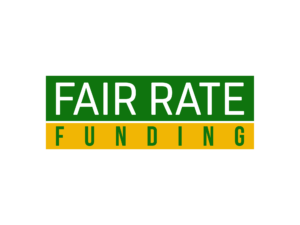The overall purpose of these posts is to inform identify and explain various issues involved with securing pre-settlement funding on a pending lawsuit. Plaintiffs and their attorneys are usually very confident in the merits of the case. However, various issues arise when attempting to quantify the risk associated with the repayment of pre-settlement funding, otherwise known as lawsuit loans. This post will analyze the impact of liens on pre-settlement funding.

Pre-Settlement Funding Liens
Almost all lawsuits involving personal injury have liens associated with the case. In fact, a contingency fee arrangement otherwise known as the “attorney fee” is the first lien on a file. Because pre-settlement funding liens and others must be paid out before the client receives his/her share of the proceeds, they are an important factor when assessing the amount of pre-settlement funding available on any given matter. Below are some common liens on personal injury cases:
Attorney’s Fees
As stated above, contingency fee arrangements are commonplace in the world of litigation funding since the vast majority of “fundable” cases arise from personal injury matters. This type of fee arrangement is endorsed by state bar associations because it allows clients access to the court system regardless of their economic status. In most arrangements, the retained attorney has a “lien” of up to 40% of the proceeds of the case. This lien stands first in line (even before the plaintiff) for payment once the case is resolved.
Letters of Protection for Medical Services
Another very common of lien found in personal injury files is a letter of protection or “LOP”. These are simply letters written by the attorney to medical providers – whether for physical therapy, chiropractic, surgery, or other treatment. The letter is a quasi guarantee the provider will be paid out of settlement and the attorney will “protect” this this amount by paying the medical bills when he receives a settlement check.
Workers Compensation Liens (Third Party Cases)
For workers compensation cases involving the negligence of another person or legal entity (also known as a “third party”), a workers compensation lien is placed on the proceeds of the case in the amount of benefits paid under state workers compensation statutes. When an employee is hurt on the job, the workers compensation insurance carrier pays benefits to the worker including the victim’s medical bills. If the injury is caused by the negligence of another party (third party), the carrier has a right to recover the money spent on benefits when money is obtained from the third party. If there is no recovery, then the lien is not satisfied. The idea is not to allow the injured party to recover twice for the injury – once through workers compensation benefits and twice through recovery in a negligence action.
Medicaid Liens
Similar to workers compensation liens, payors of medical bills want to be reimbursed for their expenditure. In the case of medicaid, the payor is the Federal government and reimbursement for these expenditures is also placed as a lien on a personal injury lawsuit.
Social Security Disability Liens
Like Medicaid payments associated with injuries caused by a negligent third party, the Feds want to be repaid for any and all Social Security Disability benefits paid out if the the disability is caused by a negligent party.
Keep in mind, discussing the nuances of Social Security, Medicaid and Workers Compensation liens is not the intent of this post. There is certainly more to write about than this space would allow. Persons interested in these topics should research them on their own through inquiries at the appropriate agency or through the advice of properly licensed legal counsel.
Lawsuit and Pre-Settlement Funding Liens
Last (on this list) but not least are pre-settlement funding liens. In many other posts, we discuss the intricacies of lawsuit loans and how they are calculated and used. It should be noted that the priority of these liens is often dictated by state law. But because lawsuit loans are voluntary transactions between parties, a lawsuit cash advance company can choose not to “fund” a case based on the presence of large liens – and they often do.
How Pre-Settlement Funding Liens Affect Lawsuit Loans
The purpose of pre-settlement funding is to help the clients economically endure the process of litigation. For this service, lawsuit funding companies want to be paid back. Large liens are frequently a major obstacle and a common factor in denying a case for an advance.
Thanks for your interest in the lawsuit funding business.
